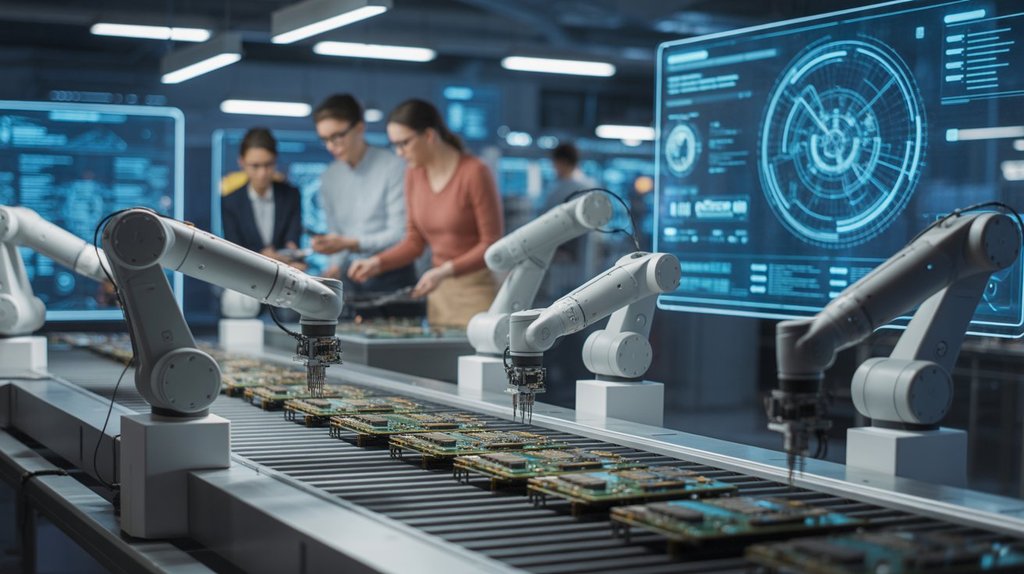HIGH BRAND
Your trusted source for tech reviews and technologies.
Business Style Summary: Introduction to Automation
Executive Summary
Automation has emerged as one of the most transformative forces in modern business. It refers to the use of technology to perform tasks with minimal human intervention, improving efficiency, accuracy, and scalability. Automation spans multiple domains, including manufacturing, software development, customer service, marketing, and supply chain management. By implementing automation strategically, businesses can reduce operational costs, accelerate processes, enhance productivity, and gain competitive advantage.
This summary explores the definition, types, benefits, challenges, tools, and future trends of automation, providing a comprehensive guide for business leaders, IT managers, and operational strategists.
1. Definition of Automation
Automation is the technology-driven process of executing repetitive or rule-based tasks without direct human input. It involves integrating software, machines, or systems to handle workflows that were previously performed manually. In a business context, automation can be applied to both back-office operations (such as payroll and accounting) and front-office functions (such as customer support and marketing campaigns).
Key aspects of automation include:
Reducing human error.
Enhancing efficiency.
Standardizing processes.
Enabling scalability.
Automation can be physical, such as robotics in manufacturing, or digital, like software bots managing workflows and business processes.
2. Types of Automation
2.1. Robotic Process Automation (RPA)
Robotic Process Automation involves using software robots or “bots” to automate highly repetitive, rule-based tasks. Examples include:
-
Invoice processing.
Data entry.
Report generation.
RPA does not require deep integration with IT systems; bots can mimic human interactions with applications, making it accessible for many businesses.
2.2. Industrial Automation
Industrial automation uses machines, control systems, and robotics to manage manufacturing and production processes.
-
Automated assembly lines.
Quality control through sensors and AI.
Predictive maintenance of machinery.
Industrial automation significantly reduces labor costs while improving output consistency.
2.3. IT and Software Automation
IT automation focuses on streamlining software deployment, testing, monitoring, and maintenance. Key examples include:
-
Continuous integration/continuous deployment (CI/CD) pipelines.
Automated server provisioning.
System monitoring and alerts.
Automation in IT reduces downtime and ensures faster software delivery.
2.4. Marketing and Sales Automation
Marketing automation uses technology to streamline, measure, and automate marketing campaigns. Tools enable:
-
Email marketing sequences.
Customer segmentation.
Lead scoring.
Sales automation improves lead management, customer tracking, and revenue generation.
2.5. AI-Powered Automation
Artificial intelligence extends automation capabilities to decision-making processes. AI-driven automation can:
-
Analyze large datasets to recommend decisions.
Perform predictive analytics for inventory and supply chain.
Handle natural language queries via chatbots and virtual assistants.
3. Benefits of Automation
3.1. Efficiency and Productivity
Automation reduces manual workload, enabling employees to focus on strategic tasks. By streamlining operations, organizations can complete tasks faster and more accurately.
3.2. Cost Reduction
Reducing human intervention minimizes labor costs and operational inefficiencies. Automation also helps prevent costly errors and downtime.
3.3. Scalability
Automated systems can handle increased workloads without proportional increases in staffing, making it easier to scale operations.
3.4. Improved Accuracy and Compliance
Automation ensures consistent execution of processes, reducing the risk of human error. In regulated industries, this helps maintain compliance with laws and standards.
3.5. Enhanced Customer Experience
Automating customer interactions through chatbots, email sequences, and self-service portals improves response time and satisfaction.
4. Challenges of Automation
4.1. Implementation Costs
Initial setup for automation tools and systems can be high, including software licenses, hardware investments, and employee training.
4.2. Workforce Displacement
Automation may reduce the need for certain roles, creating challenges in workforce management and reskilling.
4.3. Integration Complexity
Integrating automation with existing IT systems and business processes can be complex and require careful planning.
4.4. Security and Compliance Risks
Automated systems that handle sensitive data must be secure. Misconfigured automation can lead to breaches or regulatory violations.
5. Tools and Technologies in Automation
Automation relies on various technologies:
-
RPA platforms like UiPath, Automation Anywhere, and Blue Prism.
Workflow automation tools such as Zapier and Microsoft Power Automate.
AI and machine learning systems for predictive decision-making.
Industrial robotics and IoT sensors in manufacturing and logistics.
These tools allow organizations to deploy automation in different departments efficiently.
6. Best Practices for Implementing Automation
-
Assess Business Processes: Identify repetitive, rule-based tasks suitable for automation.
Start Small: Pilot automation on low-risk tasks to test effectiveness.
Involve Stakeholders: Engage employees and managers to ensure smooth adoption.
Measure ROI: Track productivity, cost savings, and error reduction.
Continuously Optimize: Update automation workflows based on feedback and performance metrics.
7. Future Trends in Automation
7.1. Hyperautomation
Hyperautomation combines RPA, AI, and advanced analytics to automate end-to-end business processes. It focuses on intelligence-driven automation that adapts to changing business environments.
7.2. Autonomous Systems
The future includes fully autonomous systems in manufacturing, logistics, and customer service, reducing the need for human supervision.
7.3. Integration with AI
AI will increasingly enhance decision-making automation, enabling businesses to anticipate customer needs and optimize operations in real-time.
7.4. Workforce Transformation
Automation will shift workforce roles toward strategic, creative, and analytical tasks, emphasizing the importance of reskilling and lifelong learning.
Conclusion
Automation is no longer a futuristic concept; it is a critical enabler of efficiency, scalability, and competitive advantage. Businesses that strategically implement automation across processes—from IT operations and customer service to manufacturing and marketing—can achieve cost savings, improved accuracy, and enhanced customer satisfaction.
The ongoing evolution of AI-driven automation, hyperautomation, and autonomous systems will continue to transform industries, making early adoption and continuous adaptation essential for any forward-thinking organization.
leave your comment!

